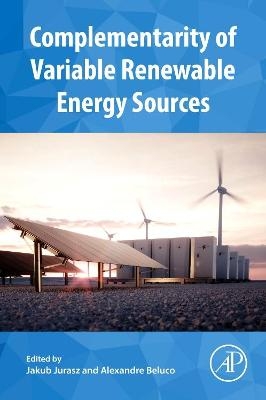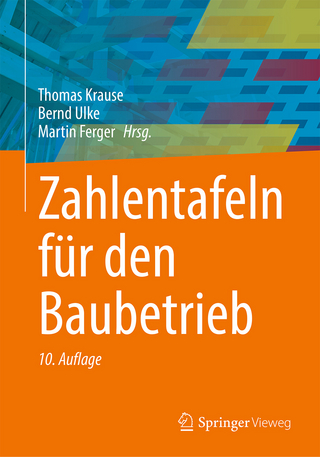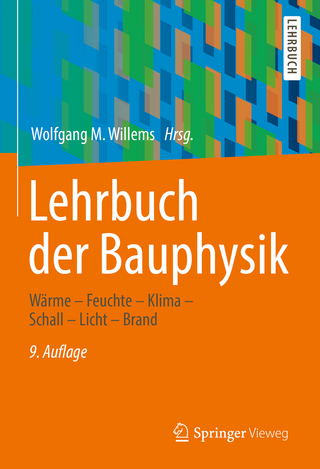
Complementarity of Variable Renewable Energy Sources
Academic Press Inc (Verlag)
978-0-323-85527-3 (ISBN)
In just over a decade, the subject of 'energy complementarity' has experienced a growing presence and understanding by researchers and managers of energy resources looking to enhance energy systems. Early research proposed methods to quantify complementarity, the effects of complementarity on performance of hybrid systems, and how to identify and map complementarity between solar energy, wind energy and hydroelectric energy systems.
Jakub K. Jurasz is an assistant professor at Wroclaw University of Science and Technology, Poland. He is a former postdoctoral researcher at MDH University, Västerås, Sweden, as a member of the Future Energy Center Group coordinated by Prof. Jinuye Yan. His PhD thesis was dedicated to the optimal operation of solar–wind-pumped storage systems. Currently, he continues his research in the area of renewable energy sources, power system transformation, and water–food–energy nexus. Alexandre Beluco is a professor at Federal University of Rio Grande do Sul, Brazil. His doctoral thesis was dedicated to the study of energetic complementarity, and he was one of the pioneers in addressing this topic. His research work is focused on hybrid energy systems, and more recently on hybrid storage systems, looking for the effects of complementarity and also for solutions to local problems, among other topics.
1. Introduction
2. Research trends in renewable energy complementarity: A bibliometric analysis
3. Meteorology as a backbone of complementarity research
4. Meteorological fundamentals of spatiotemporal balancing between the solar and wind energy resources
5. Metrics used for the evaluation of complementarity – review
6. New metric for complementarity assessment
7. GIS tools in complementarity research – estimation and visualization
8. Off-grid hybrid systems reliability and transmission line utilization from the perspective of renewables complementarity
9. On the role of complementarity in siting renewable power generation assets and its economic implications for power systems
10. A comparative study of correlation coefficients used to assess the solar and wind complementarity in Mexico
11. Global complementarity of renewable energy sources
12. Complementarity and application of renewable energy sources in the marine environment
13. Complementarity between rare renewable energies
14. Complementarity in the context of water-food-energy nexus
15. Complementarity in the context of water-energy-ecosystem nexus
16. Water-energy-food nexus in hydropower dominated power systems - the Brazilian case
17. The role and applications of renewable energies in agriculture from the complementarity perspective
18. Impact of climate change on wind and solar energy sources complementarity: a case study of the northeast Brazilian region
19. Assessment of the energy production by hybrid system ''micro hydropower power plant and solar photovoltaic power plant
20. Operations management of large hydro-PV hybrid power plants: Case studies in China
21. Short term complementarity of utility-scale solar and wind power plants
22. Long term changes in complementarity and their impact on off-grid systems reliability
23. Governing complementarity to enhance environmental, economic and social benefits of renewable energy
24 Dancing with renewables: a holistic perspective encompassing the role of the demand side
25. Teaching about complementarity – proposal of classes for university students – including exercises
26. Complementary concentrated solar power - wind hybrid system with thermal storage and ORC
27. Complementarity of renewable energy sources in the context of heating and cooling systems
| Erscheinungsdatum | 01.06.2022 |
|---|---|
| Zusatzinfo | 250 illustrations (200 in full color); Illustrations, unspecified |
| Verlagsort | Oxford |
| Sprache | englisch |
| Maße | 191 x 235 mm |
| Gewicht | 1500 g |
| Themenwelt | Technik ► Architektur |
| Technik ► Elektrotechnik / Energietechnik | |
| Technik ► Maschinenbau | |
| ISBN-10 | 0-323-85527-X / 032385527X |
| ISBN-13 | 978-0-323-85527-3 / 9780323855273 |
| Zustand | Neuware |
| Haben Sie eine Frage zum Produkt? |
aus dem Bereich


